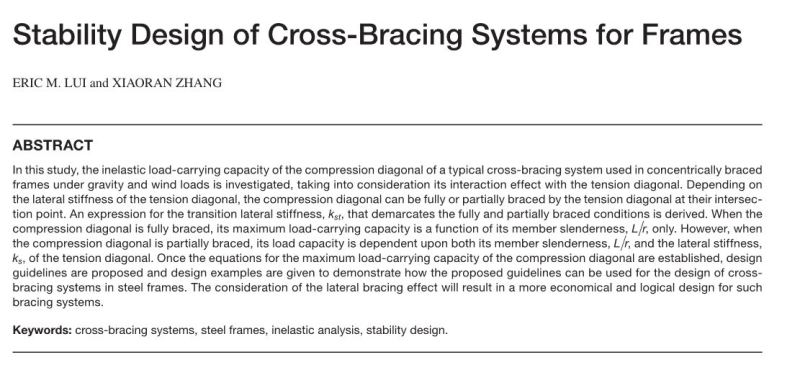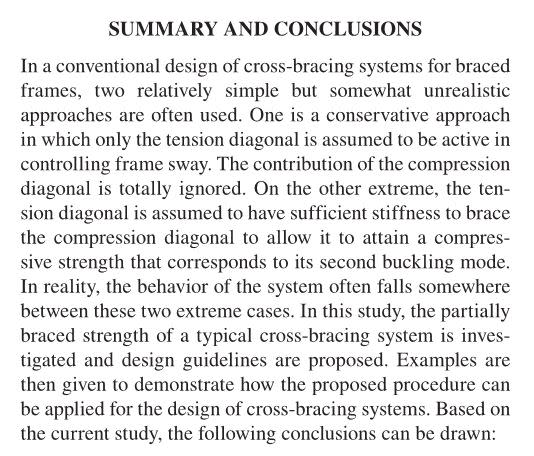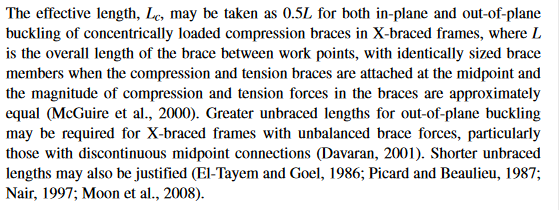Hello Structural Community!
Here is a background.
I have a scenario where I'm assuming existing bracing can't withstand compression and would work in a tension system only. I know that AISC is discouraging the use of tension only systems because of increased risk.
However I just have a few questions regarding bracing
1. What K-values are you guys using? I've read that you can use up to 0.7 as a maximum and most people are using 1.
2. If you have an WT section that is connected in the middle, can you set the Ly as half the brace length?
3. In the situation of 2, how can you set your Lz as half the brace length when you still have a k value of 2?
I understand if one brace goes into tension and the other in compression that the brace in tension is theoretically bracing the other brace in compression but wouldn't they have a tendancy to slide? Then put eccentric force on the tension member?
Here is a background.
I have a scenario where I'm assuming existing bracing can't withstand compression and would work in a tension system only. I know that AISC is discouraging the use of tension only systems because of increased risk.
However I just have a few questions regarding bracing
1. What K-values are you guys using? I've read that you can use up to 0.7 as a maximum and most people are using 1.
2. If you have an WT section that is connected in the middle, can you set the Ly as half the brace length?
3. In the situation of 2, how can you set your Lz as half the brace length when you still have a k value of 2?
I understand if one brace goes into tension and the other in compression that the brace in tension is theoretically bracing the other brace in compression but wouldn't they have a tendancy to slide? Then put eccentric force on the tension member?



